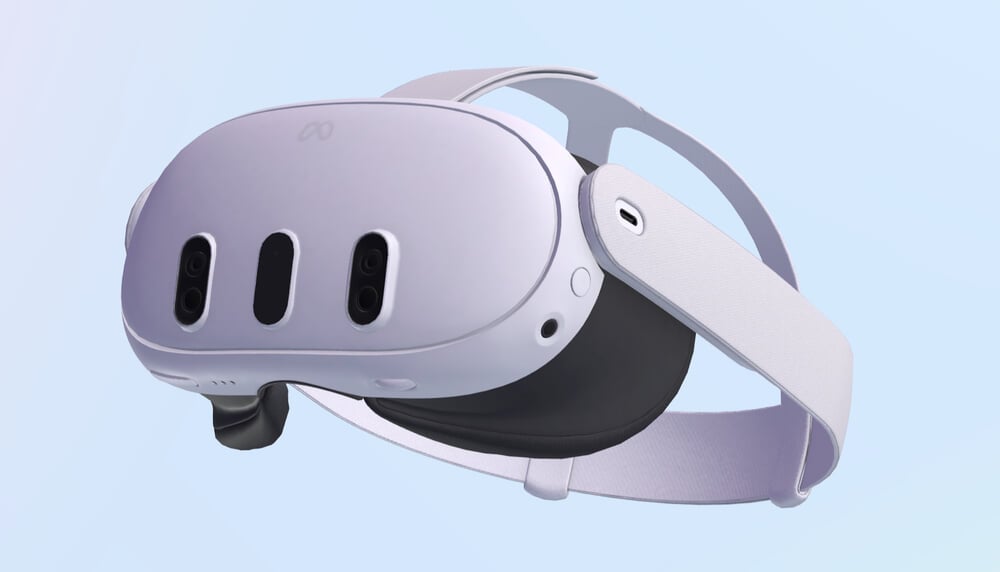I’ve been closely following the world of virtual reality since the Oculus Rift’s pitch first took the world by storm, and ended up raising well over two million dollars on Kickstarter in 2012. Plenty of hardware and software has shipped since then, but more than ten years later, it still feels like we’re in the infancy of VR. Unfortunately, we might have to wait a decade or two longer to see it mature into something beyond a truly niche interest.
Having used everything from the lowly Google Cardboard to the reasonably powerful Meta Quest 3 (released in 2023,) my affection for VR has never once stumbled and I’ve never been more sure that fetch isn’t going to happen any time soon.
Very few people have the space
Despite having a house of my own — more space than the vast majority of city dwellers — I can’t find a really good place to give VR the room it deserves.
If nobody else is home, I get to do some room-scale gaming, where I can walk around, but I end up with a very narrow corridor due to furniture that can’t be easily moved. If my wife is home, I run into her by accident, so I retreat to my office with even less space.
And, even when I use a stationary mode for games like “Beat Saber,” I end up regularly shifting out of bounds or nearly smacking my hand into the wall.
Living spaces simply aren’t designed to be VR friendly, and you look like a maniac if you go outside with a helmet on. That isn’t going to change anytime soon.
You can’t just slap VR modes on everything
In a year where “Suicide Squad” was poorly received on consoles and PC, a brand new “Batman: Arkham” game released to much warmer reviews on the Meta Quest. That means the VR “Batman” is a better experience, right?
Well, I played “Arkham Shadow” myself, and while it’s a solid game in certain aspects, I was left feeling cold towards AAA virtual reality. It feels like a less-precise interpretation of a fairly stale formula, and the VR-specific mechanics ended up more off-putting than exciting.
Slowly moving my arms up and down to climb a ladder doesn’t make me enjoy the game more. Having to make broad sweeping motions to pop out my cape for a glide just makes traversal more fiddly. It’s frustrating in a way that pressing a button or moving a stick with traditional video games is not.
It’s clear that you have to design games around the limits and abilities of VR, and that means huge swaths of games are no-gos. Porting existing games isn’t easy, and even reusing basic concepts or level designs can be problematic or at least sub-optimal.
That’s not all, sadly. Unless you have industry leaders like Meta subsidizing development, dedicating enough developer resources to make top-tier experiences isn’t profitable for most indie folks. “Batman” had Meta money, and even that turned out disappointing. It’s no secret that other VR-friendly companies are having a difficult time making ends meet.
The usability problem
Wearing a helmet sucks. While straps and setups can help with the weight and pressure issues, and they will get better over time, there is no getting around the discomfort of having a robot strapped to your head.
Lenses fog, your face will itch, and you’re going to get the VR sweats if you have it on for more than 45 minutes. And, if you wear glasses, you’re either going to deal with inevitable slippage, or spend even more money for prescription lenses.
Some significant portion of the population will just straight-up vomit if they put on a VR helmet. Hopefully things get better with time, rapidly, but certain aspects are not something that can be engineered away without a trace.
Companies like Meta and Apple are seemingly convinced that people want to spend their days working and socializing with headsets on, and that has proven to be untrue. It doesn’t matter how big a virtual screen can be, it’s not a better experience than just looking at a monitor in the real world.
The Metaverse? It’s a bust. Zuckerberg dumped tens of millions of dollars into it to end up with bupkis. Fetch. Isn’t. Happening.
VR’s strength is also its weakness
By far, the most compelling part of any VR experience is the much ballyhooed “presence” that effectively tricks your brain into believing that you’re somewhere else.
I’ve yet to feel “immersed” in any video game played on television, but five minutes in “Vacation Simulator,” and I’m transported far, far away from my living room. That’s wonderful if I have absolutely nothing to do, and nobody else is near me — but that simply doesn’t happen very often.
Inevitably, a pet wants attention, my wife has something to say or my inbox will ding. Apple has tried their best to solve the issue with video pass through and creepy eye projection, but there’s no replacement for taking off the stupid helmet to deal with the real world.
I love being digitally transported, but it just doesn’t fit into my life very well. If a VR diehard like me can barely overcome that barrier, imagine how hard it will be to convince skeptics.
[Image: Meta]
